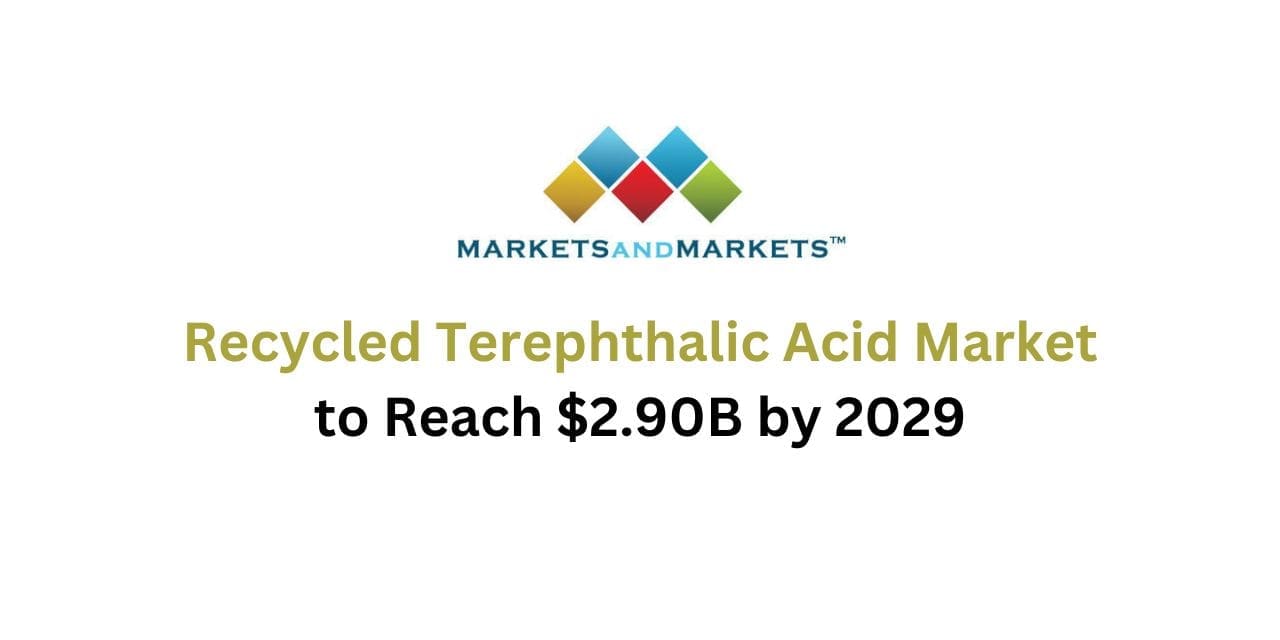During the forecast period, the size of the “Recycled Terephthalic Acid Market by Process (Hydrolysis, Pyrolysis), Application (Fiber, Films, Resins), End-Use Industry (Textiles, Automotive, Construction, Packaging)-Global Forecast to 2029″ is expected to increase at a compound annual growth rate (CAGR) of 4.4%, from USD 2.34 billion in 2024 to USD 2.90 billion by 2029. As an alternative to virgin TPA, which was previously obtained from petrochemicals, recycled terephthalic acid is chemically recovered from PET trash, such as bottles, textiles, and other packaging materials. The market for recycled terephthalic acid is driven by factors such as ongoing environmental consciousness, supportive recycling frameworks, and the growing trend toward sustainability in the construction, packaging, textile, and automotive industries. The use of recycled terephthalic acid is encouraged on a much larger scale by national campaigns aimed at reducing waste and focusing on the goals of the circular economy. In addition, employing recovered content draws in eco-conscious customers searching for green products and aids businesses in meeting environmental targets.
Download PDF Brochure
Browse
• 253 Market data Tables
• 54 Figures
• 235 Pages and in-depth TOC on “Recycled Terephthalic Acid Market – Global Forecast to 2029″
Some of the prominent key players are:
- Indorama Ventures Public Company Limited. (Thailand),
- Alpek S.A.B. de C.V. (Mexico),
- SUEZ (France),
- ALPLA (Austria),
- Unifi, Inc. (US),
- SK chemicals (South Korea), and many more….
Opportunity: Rising Demand for rPET in fashion and textiles presents opportunities for sustainable rTPA production
The demand for rPET in the fashion as well as in the textile industries opens tremendous opportunities towards sustainable production of rTPA. As most consumers are becoming environmentally conscious, brands opt for recycled polyester fibers from rTPA to meet sustainability goals. Most fashion houses, sportswear brands, and fast fashion companies have started adopting rPET fabrics as a response to the need to curb the carbon footprint. This conversion supports a circular economy by rejuvenating post-consumer PET waste to become high-quality fibers used in textiles for clothing, shoes, and home furnishings. The fashion industry also responds to regulatory pressures by encouraging regions like the European Union to use recycled content in textiles, thereby reducing plastic waste and promoting resource efficiency. Leading brands are setting public commitments to increase the proportion of recycled material in their collections, and thus are further accelerating demand for rTPA-based rPET fibers. Textile manufacturers are subsequently looking for reliable sources of rTPA in order to make sustainable polyester yarns that do not compromise durability, comfort, and performance of the fabrics. Furthermore, the collaboration between the fashion businesses and recycling industries may also enable these industries to establish closed-loop systems, thereby ensuring successful collection, recycling, and reuse of PET-based products.
Textiles is anticipated to be the second largest segment Recyceled terephthalic acid Market segment, by end-use industry, during the forecast period.
The textiles industry is the second-largest end-use industry in the recycled terephthalic acid market hence, recycled polyester fibers are widely applied in fabric production. Polyester is a synthetic fiber derived from recycled terephthalic acid, largely used in all sorts of apparel, home textiles, and industrial fabrics. With sustainability becoming more and more of a major focus for all industries, the demand for recycled materials such as rPET grew in textiles. Brands are increasingly finding themselves resorting to using recycled fibers for reducing their environmental footprint and catering to the need from consumers for even more sustainable products. That is to say that conversion of terephthalic acid from recycling into high-quality, long-lasting, and versatile fibers makes the textiles industry a central sector in the circular economy. As the industry strives to lower its carbon footprint and continue to promote responsible production, the use of recycled terephthalic acid in textiles will continue to grow in popularity, making it the second-largest end-use industry within the recycled terephthalic acid market.
Europe is expected to be the second largest region in the global Recyceled terephthalic acid Market, by region, during the forecast period.
Europe is the second largest region in the recycled terephthalic acid market due to the growth of regulatory frameworks, sustainability, and greater consumer demand for environment-friendly products. European Union further has green policies, such as the Green Deal and the Circular Economy Action Plan, which initiate recycling and ensure plastics are reduced, hence increasing the use of recycled terephthalic acid through industries such as packaging, textiles, and the automobile. Second, there is advanced recycling infrastructure in Europe, complemented by efficient collection and segregation systems, which supports large-scale production of terephthalic acid. Environmentally conscious consumers in Europe encourage products made of recyclable materials, mainly in packaging sectors. Major brands commit increasingly to the use of recycled content, further boosting demand.
About MarketsandMarkets™
MarketsandMarkets™ has been recently recognized as one of
America’s best management consulting firms by Forbes, as per their recent report.
Founded in 2009, MarketsandMarkets recognized uncharted business potentials within disruptive trends, forecasting a surge of $25 trillion in new B2B revenues by 2030. In our 13-year journey, we’ve collaborated with over 10,000 companies, generating $140+ billion in revenue impact. From a market research publisher, we’ve transformed into a growth-enabling leader, backed by a 1500+ strong team.

